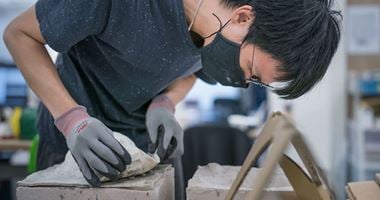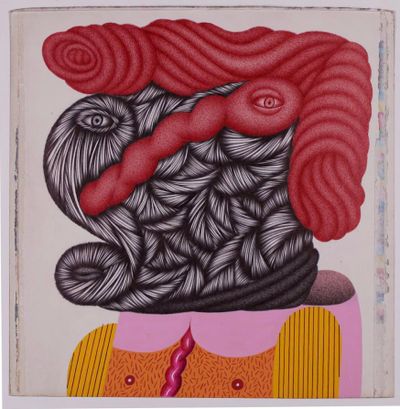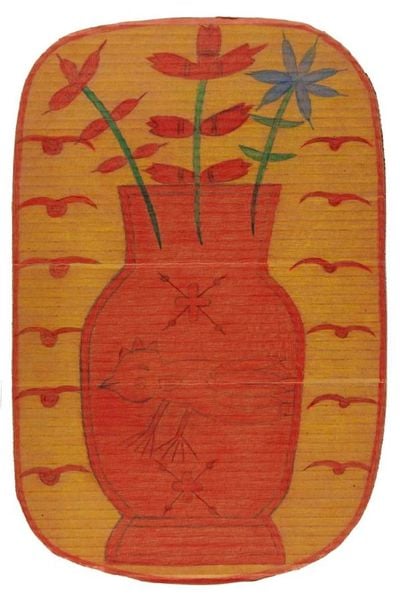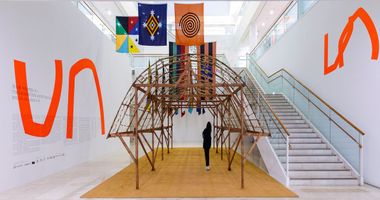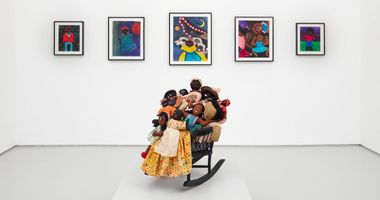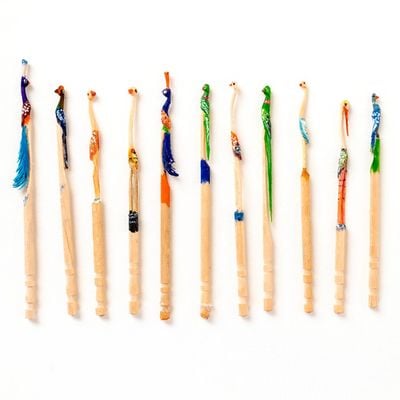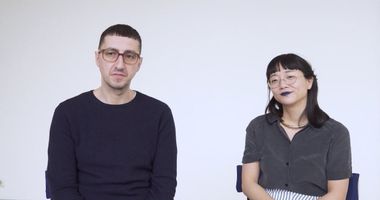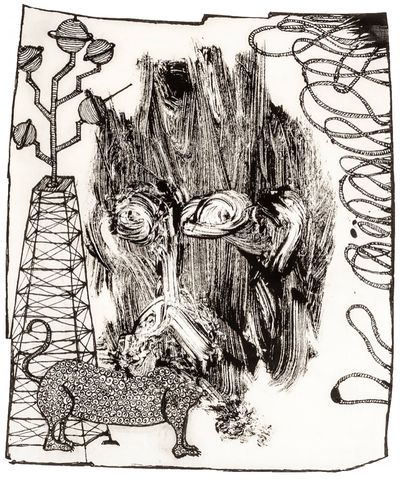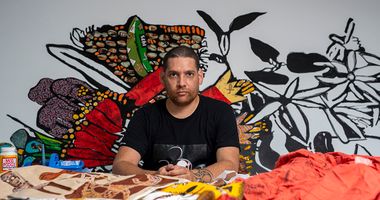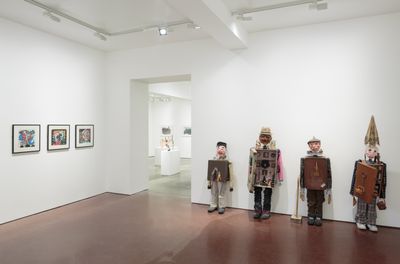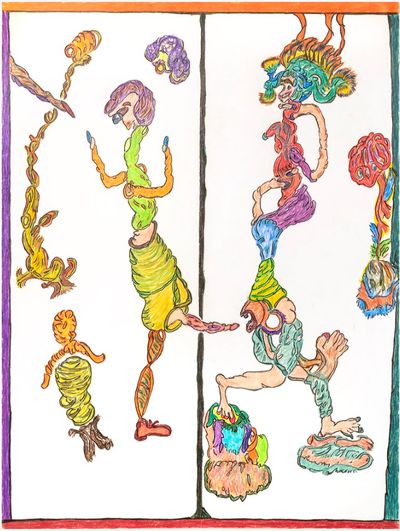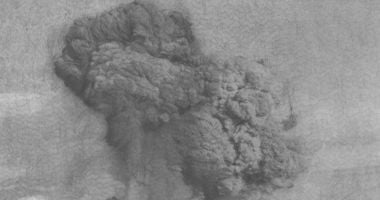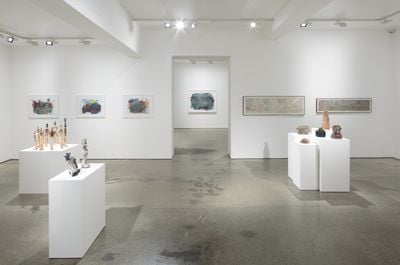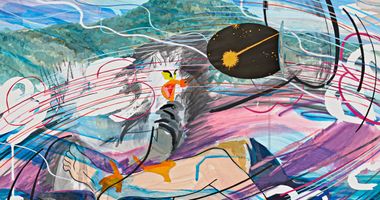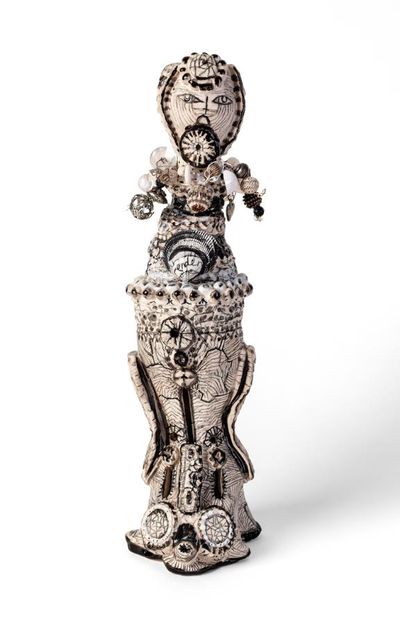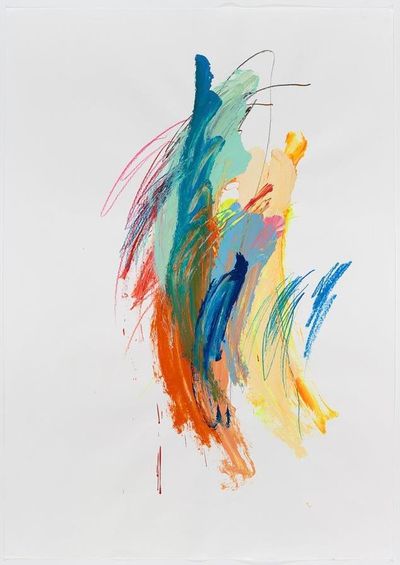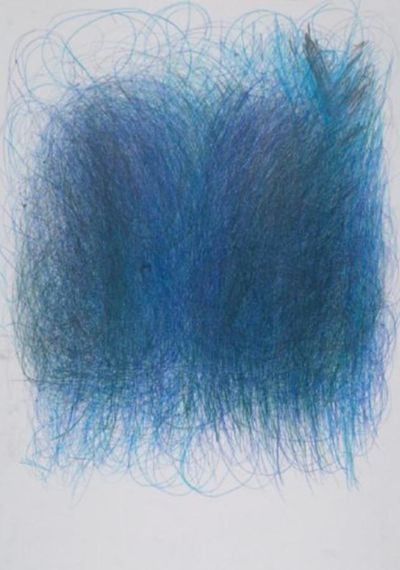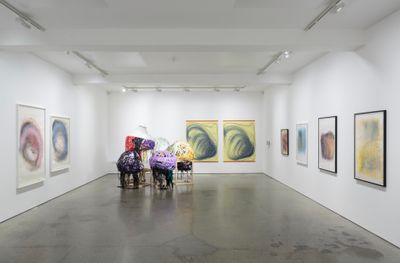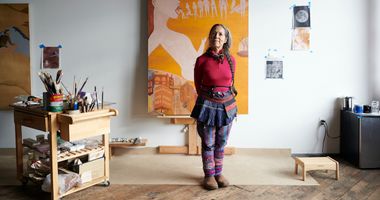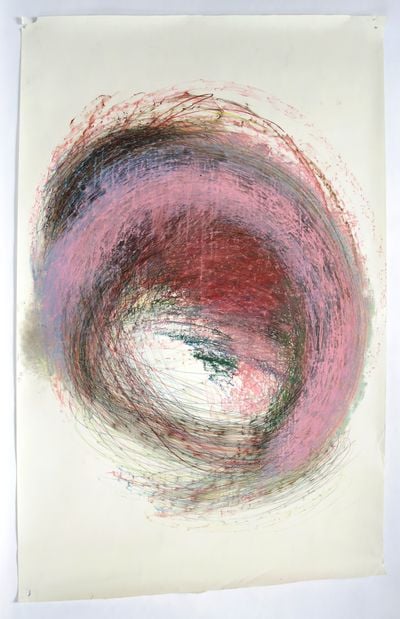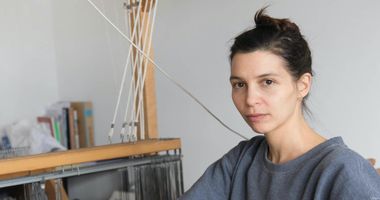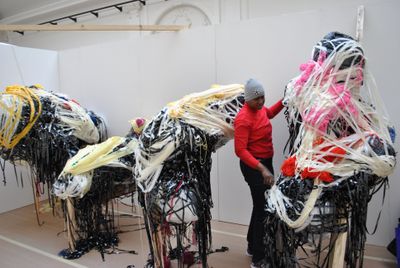In Margate, an Exhibition Amplifies the Process of Making Marks
Nnena Kalu, Vortex Map Drawing (c. 2015). Mixed media on found OS map. Courtesy Slominski Projects.
As art histories and aesthetic trajectories continue to expand in the globalised and networked field of art, group exhibitions have become exploratory sites for decentring.
A case in point is the group show To all the Kings who have no Crowns, which brings together over 90 artworks by 17 international artists working across media, including drawing, painting, ceramics, embroidery, and found objects.
Hosted by Carl Freedman Gallery in Margate (30 January–3 April 2022), where the East London gallery decamped to in 2019, the exhibition is curated by Jennifer Gilbert of Jennifer Lauren Gallery, which has long explored how non-conventional, self-taught, neurodivergent, and disabled artists are redefining the practices of artmaking.
The result is an expansive breadth of works by an intergenerational group of artists—the eldest, Masao Obata born in 1948 and Raymond Morris, born in 1951, and the youngest, Joe Goldman and Norimitsu Kokubo, in 1995. Among them is Valerie Potter, Hakunogawa, Margaret Mousseau, and Kate Bradbury, whose intricate black-and-white ink drawing characterised by repetitive imaginative patterns and images from dreams lends the exhibition its title.
Staged across three main white cube spaces housed in the former Thanet Press building, a 1960s commercial establishment spanning 10,000 square feet, the curatorial does well to avoid framing participating artists with the worn-out label of 'outsider' to describe creative outputs that resist tidy boundaries.
With no fixed thematic grouping, the show spotlights individual practices by showing bodies of work or series, leaving it up to viewers to discover commonalities including vivid mark-making, repetition in actions, and the laborious attention to detail manifesting across aesthetics and media.
In the first gallery, one of the most profound examples of this rigour and attention to detail are Pradeep Kumar's outstanding toothpick carvings. Based in India, Kumar was born with speech and hearing limitations and began carving chalk as a schoolboy to centre his wandering mind in a classroom environment unable to cater fully to his learning needs.
This led to Kumar being home-schooled, and on the encouragement from his father, who noticed his remarkable carving skills using a razor blade, Kumar took up crafting matchsticks and later toothpicks into forms like Untitled (n.d).
Three sets of five carved toothpicks in custom acrylic boxes displayed on plinths resemble miniature totems. On close inspection, they are people and birds carved onto ends of the toothpicks rendered in bright coloured pencils and paints. The intricacy of each toothpick draws the viewer in to look closely at their detailed surfaces, all expressing their own individuality.
Next to Kumar's miniature sculptures are life-size assemblages by Kate Bradbury based on characters drawn from her imagination and constructed from found industrial and household items she collects meticulously and archives in boxes in her home.
Four sculptures titled The Artist, Sister Edith, Railroad Jim, and Tallulah the Tourist (all 2012) are constructed from a variety of media with distinct papier-mâché heads and torsos fashioned from vintage trunk cases filled with objects reflective of each personality.
In The Artist, for example, a trunk-torso is open to reveal a 'chest' filled with empty tubes of oil and enamel paint, a miniature easel, a miniature picture frame, and broken bits of china, all alluding to fragments suggesting the internal makeup for creativity/creative thought.
Bradbury's refashioning of waste in these embodied sculptures comments on reuse and reconstruction through discarded objects loaded with meaning—ideas that are extended in vivid coloured pencil drawings placed alongside works by Kumar and Bradbury by Margaret Mousseau.
Portrait (2018) depicts a hybrid feminine figure composed of colourful lines that look like veins, whose style speaks to the artist's background as an X-ray technician and working in a hospital for over 20 years.
In the second gallery, a captivating display of ceramics by Terence Wilde and Shinichi Sawada present the medium as a curative and healing part of their everyday lives.
Wilde worked in fashion printmaking in London for many years and draws from his perspective as an adult survivor of mental health challenges to express creativity from a monochromatic perspective through pen drawings and ceramics.
Two recent figurative ceramic sculptures, Ivory Tower, a full figure, and Armour for Amore, a head (both 2021), trace what the artist describes as different periods of his life and personal situations. Both black-and-white forms are covered with a highly detailed combination of squiggly, straight, and circular lines intersected with doodles.
Since 2000, Sawada has been an active member of Nakayoshi Fukushikai, a social welfare organisation for disabled individuals in Japan, where he has consistently made intricate detailed ceramic sculptures secluded in the mountains alongside working at the institution's bakery.
Five of Sawada's sculptures on view (all 'Untitled', 2006–2019) allude to the mythological or excavated ruins from an imagined or lost civilisation. Human, non-human, zoomorphic-like figures are completely covered in tiny spikes with precision and confidence, a signatory characteristic of his sculptures.
As a whole, this exhibition is an ambitious showing of creativity and fluidity in the practices of disabled artists in contemporary art.
A prolific artist whose sculptures evoke both the familiar and unfamiliar with forms, Sawada works on his characteristic pieces for about four days before they are dried for six months and then fired in hand-built wood-fired ovens.
The final gallery is dedicated to works on paper expressing individual mark-making techniques. Joe Goldman's series of four drawings (all works 'Untitled' from 2016) contain densely layered marks in multi-coloured acrylics, pencil, and pastels, while Éric Derochette explores abstract mark-making initially by repeating circular motifs using pencils and other tools.
Derochette's later works on view from 2017–2019 combine colourful inks and oils freely to create bold colour-field works, like in the alchemical mixing of different shades of blues, greens, greys, and flickers of yellows of Untitled (DERO 25) (2017).
As a whole, this exhibition is an ambitious showing of creativity and fluidity in the practices of disabled artists in contemporary art, resisting easy categorisations or rather pushing against fixity.
Process remains at the foreground, with works by Nnena Kalu expanding this sense of free mark-making on paper into six spatial constructions (Untitled 1–6, 2022) made from strips of tape, paper, textiles, and VHS tape repeatedly assembled through binding the materials together to form a cocoon of sorts.
Kalu's sculptural works extend to two of the artist's 'Untitled Vortex' drawings on view (all from 2022), each consisting of a large pencil and paint pen resembling a tunnel against a yellow background created through the repeated layering of grey, blue, and black marks made in circular motion.
Kalu, who will complete these drawings in a live performative session on 26 February at the gallery, is mostly non-verbal and autistic. She has been working with circular and line motifs for over two decades and is driven by an intrinsic drive for repetitive mark-making to densely layer two and three-dimensional artworks in depths of colour.
The resulting untitled drawings express a rhythmic approach to creating art that is trance-like, particularly with live and performative drawings, as she responds to the rhythm and surrounding sounds that influence resulting shapes and forms.
While Kalu's drawings create a portal into the very heart of abstraction, her sculptures take on this same ethos in the three-dimensional by manifesting collections of layered wrapping of materials—coloured tape, masking tape, textiles, and so on—to form tightly constructed cocoons.
Kalu's drawings are reflective of a wider way of working in an assertive and focused manner which speaks to the heart of this exhibition's exploration of artistic practices centred on repetition and compulsive processes in artmaking.
This results in a moving display of artworks that reflect individual ways of seeing the world and methods of translating one's lived experiences. —[O]

